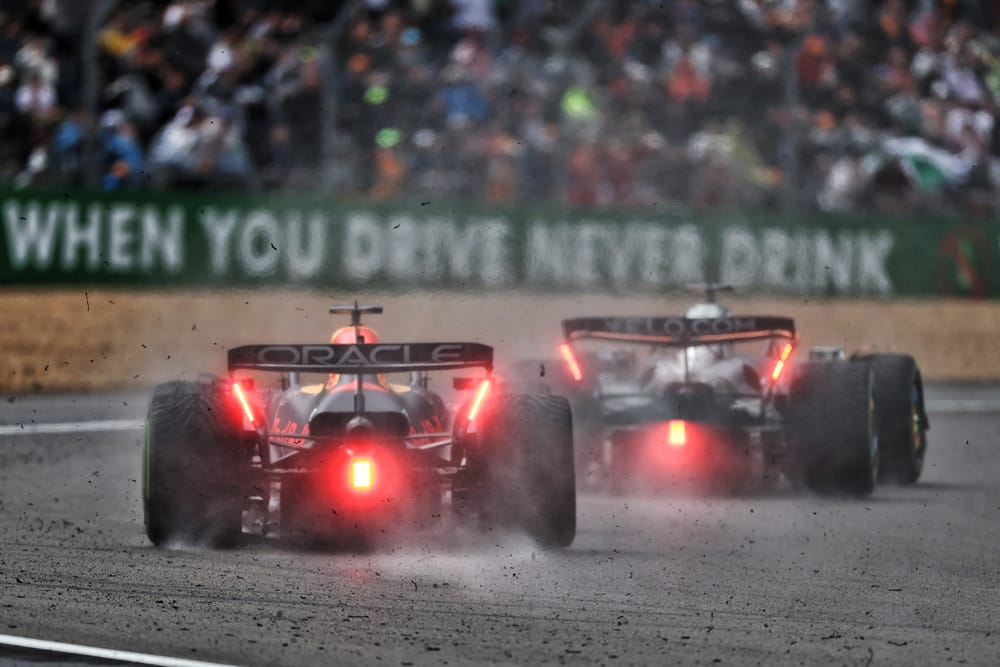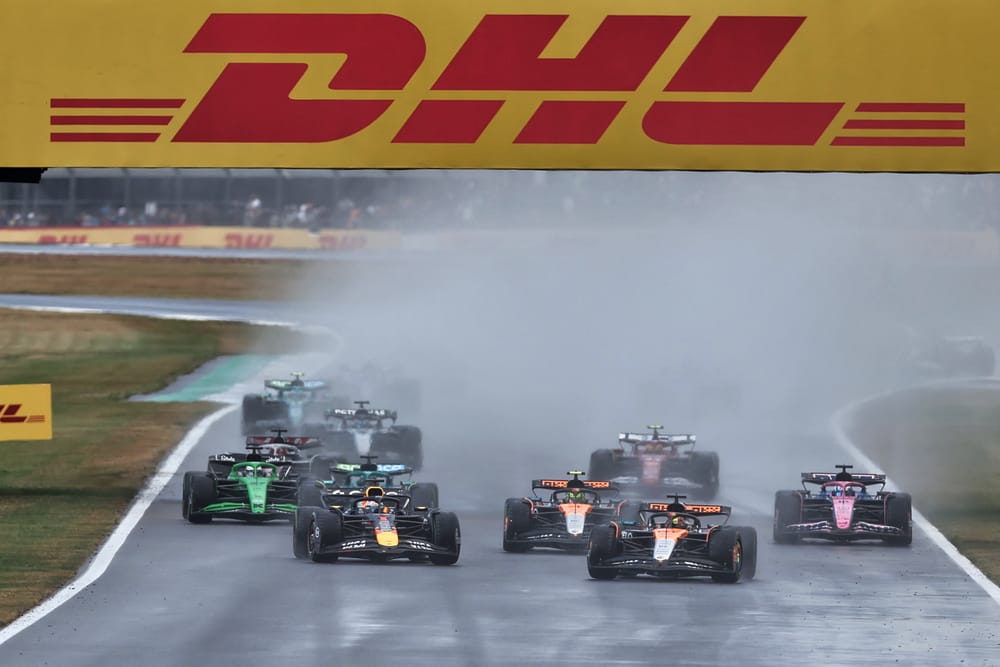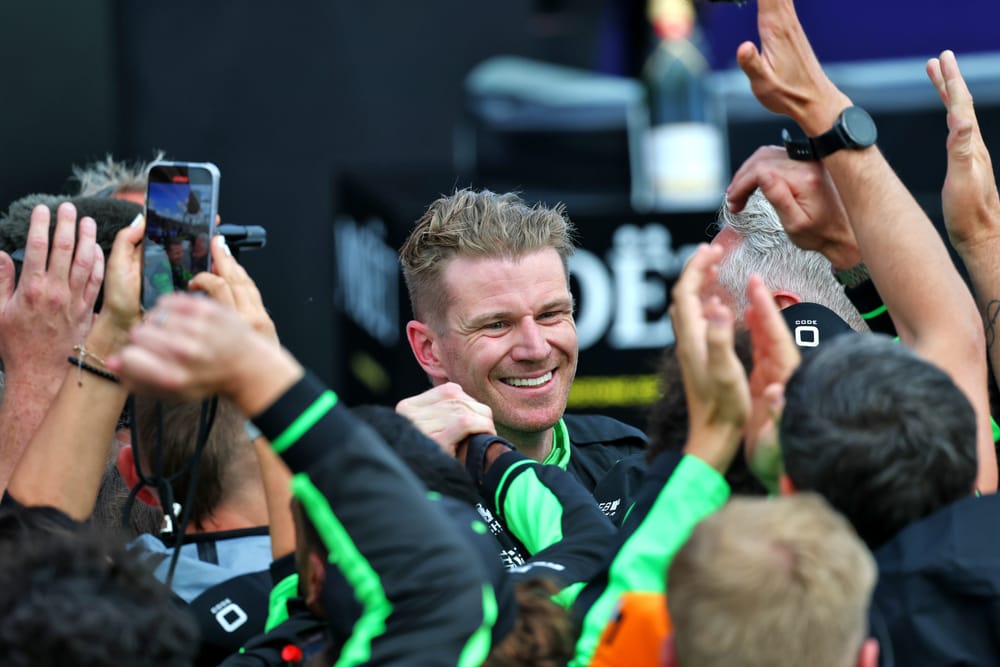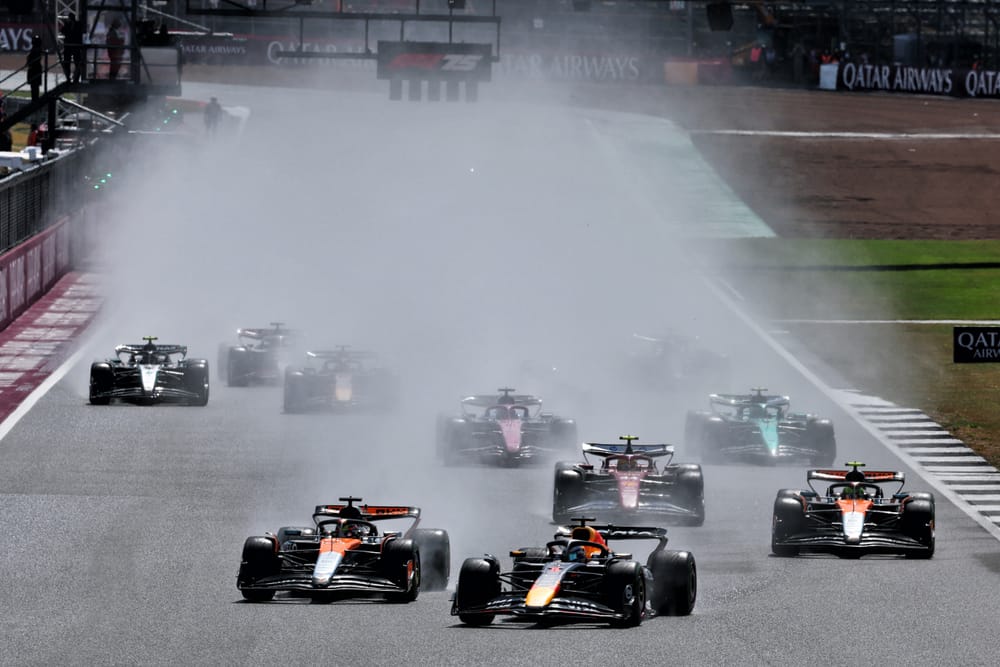Formula 1’s British Grand Prix had been widely expected to be a four-way fight for victory between McLaren, Red Bull, Ferrari and Mercedes based on how tight things had looked throughout practice and qualifying.
In the end, it turned out totally different. Oscar Piastri and Lando Norris were in a class of their own, as they were joined on the podium by Sauber driver Nico Hulkenberg.
The door had been left open for such a scenario by McLaren’s main opposition all effectively taking themselves out of contention – either through set-up choices made earlier in the week or bad decisions on a day when the weather played a curveball.
Here is how it all went wrong for McLaren’s rivals.
'Catastrophic' decision-making at Mercedes
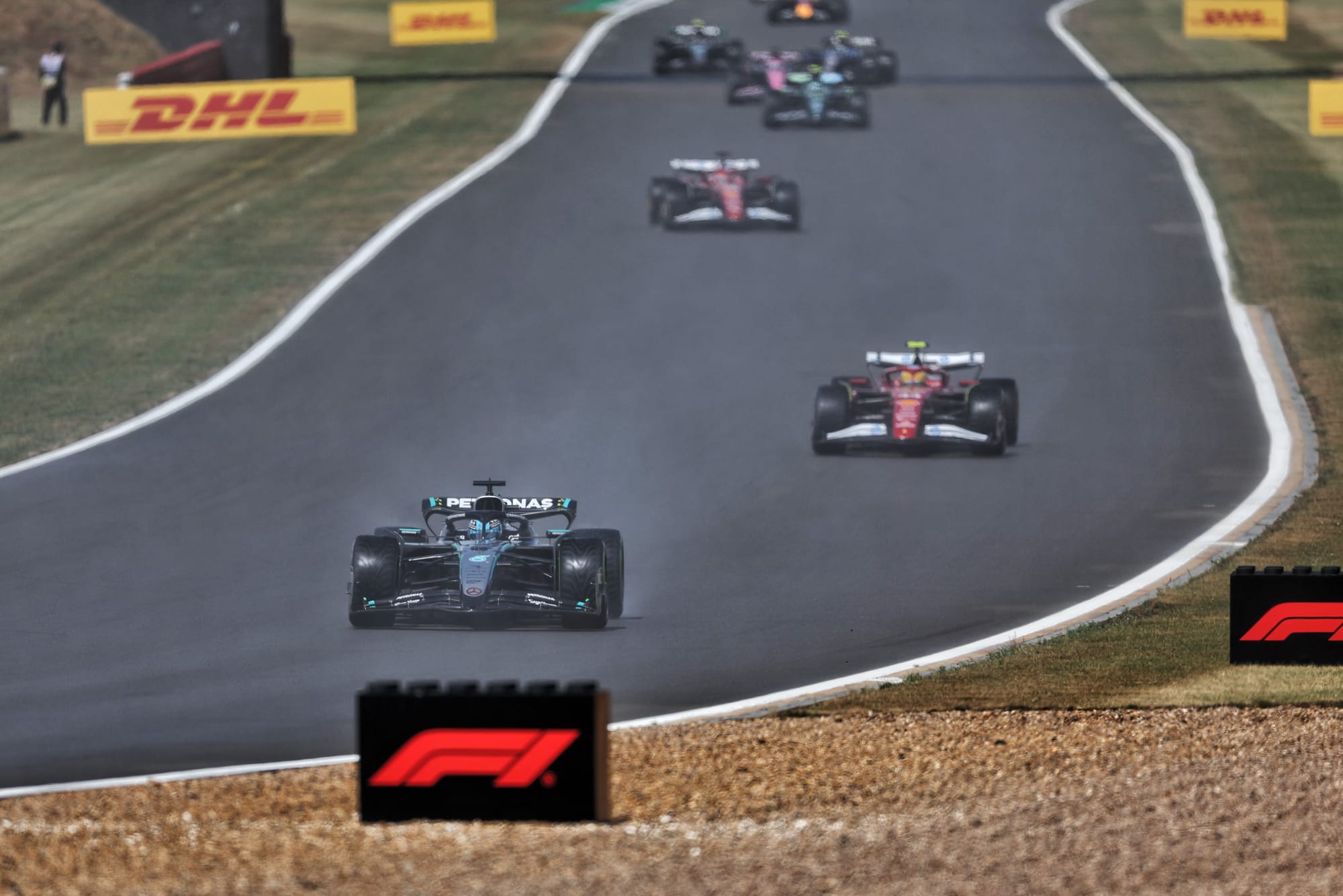
When Mercedes boss Toto Wolff saw the weather forecast for the British Grand Prix a week ago – predicting 19C and showers – he had cheekily suggested the squad would be in the hunt for victory given its temperature dependent form and strength in colder weather.
But things did not look so easy after qualifying as neither George Russell nor Kimi Antonelli had looked to have the pace to be able to get in the mix with McLaren, Red Bull and Ferrari in the fight for pole and they were only fourth and seventh fastest respectively.
It may have been the fact that they were slightly on the backfoot that encouraged Russell to be among the first to take slicks on the formation lap – a move that Wolff said was the moment that doomed the team.
“Everybody acknowledges that the first decision was actually the catastrophic one,” he said.
The track was clearly not dry enough, but Mercedes still elected to bring in Antonelli a couple of laps later – which effectively put both its drivers out of contention.
Antonelli would later retire after being struck from behind by Isack Hadjar, while Russell’s miserable afternoon was compounded late on by the final switch to slicks – which happened too early and onto the wrong hard compound.
It was little wonder that Wolff seemed a bit exasperated about how things had spiralled out of control from the off as it was left with just a 10th place finish at the end of it all.
“I wouldn't say it was a snowball effect,” he said. “It was more like one action, the driver-pitwall action, triggered a situation that was already bad.
“We can keep it very simple: the second decision with Kimi was wrong, the third decision was wrong. And I think the driver-pitwall communication was just very bad today.”
Red Bull's Monza wing impossibility
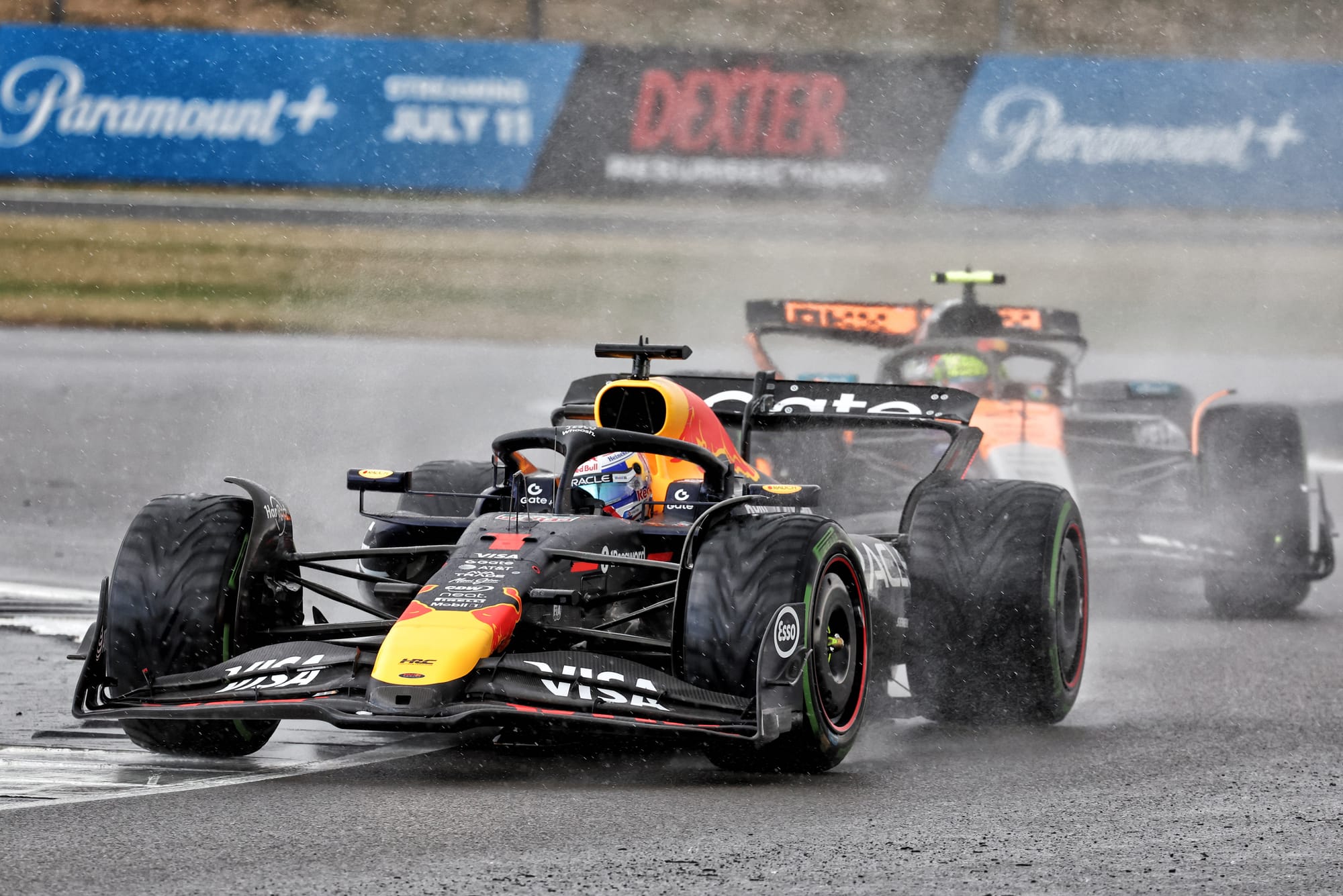
The decision Red Bull made on Friday night to opt for a Monza-spec rear wing to help dial out some inherent understeer seemed to have been a genius move after qualifying.
As Max Verstappen pulled off a surprise pole position, it seemed the team had done the impossible and found a brilliant way to keep McLaren at bay.
With Red Bull’s RB21 still able to take Copse flat, the disadvantage it had in a few corners was overcome by being quicker on the straights and easy kinks.
But the call would ultimately doom the squad as, with the weather forecast changing, there was no way a skinny rear wing was going to be any good in the wet where downforce is king.
“It had been suggested it would be just raining a bit in the morning and it would then be fine,” said Verstappen. “Then suddenly it shifted to more severe rain.”
The reigning world champion valiantly held on as much as he could early on, but as his tyre wear increased, he fell back.
Then his fate was ultimately sealed when, slightly caught out by Oscar Piastri’s safety car restart incident, he half spun at Stowe just before they got going again.
Dumped into the pack, Verstappen and Red Bull made a bit of a recovery to come fifth – but it was much less than would have been achieved in a dry race.
“It was just a very difficult balance in the car between high speed and low speed,” explained Verstappen.
“I couldn't really find a good balance. Also in the end I think we were degrading the tyres too much. Then I had of course my moment, which made everything a bit more difficult.”
Verstappen's team-mate Yuki Tsunoda's afternoon was wrecked by a 10-second penalty he picked up for a collision with Ollie Bearman. He finished last on the road for a second race in a row.
Ferrari nowhere - 'really nowhere'

Charles Leclerc was left in almost disbelief about how his British Grand Prix had gone off the rails after joining Russell as one of the early stoppers for slicks.
A lack of pace, some off-track moments (which included a spin caused by some water getting inside his helmet) and some do-or-die moves were only enough to get him up to 14th in the end.
“We were kind of nowhere the whole race,” he told the media straight after. “And when I say nowhere, it’s like really nowhere. I was one second off, and like on top of that, I was doing lots of mistakes.
“I was really struggling to keep the car on track. So it was an incredibly difficult day.”
Team-mate Lewis Hamilton did not have a much better time after struggling with the balance – and a car that proved too snappy in wet conditions.
Afterwards he said: “It’s the most difficult car I've driven here
“It's only my second time driving in the wet in this car. I can't even express to you how hard it is; it's not a car that likes those conditions.”
Beyond Leclerc’s race being killed off by the early switch to slicks, Ferrari’s hopes were not helped by a simple lack of pace – proven by the fact that Hamilton could not get on terms with Hulkenberg late on and had to settle for fourth behind the Sauber.
The trigger for this, off the back of what had been Ferrari's most encouraging Friday, was a combination of wing levels and set-up choices.
The team had pitched its downforce level somewhere between McLaren and Red Bull – which was not only suboptimal for the wet conditions but also left it struggling when trying to race other cars.
Another element that seems to have hurt it is the fact that the radical set-up that Leclerc has used to overcome some of the SF-25’s weaknesses might work in the dry – but it is a nightmare in the wet with a loose rear hard to tame.
“I went quite extreme with the set-up on my car for the last few races, and it paid off in the dry,” he said. “However, in the conditions we saw here today, it didn’t seem to work as well.”
If it was bad for Leclerc, who feels more comfortable with an oversteery car, you can suspect it was even worse for Hamilton who has never liked it when things get too snappy.


